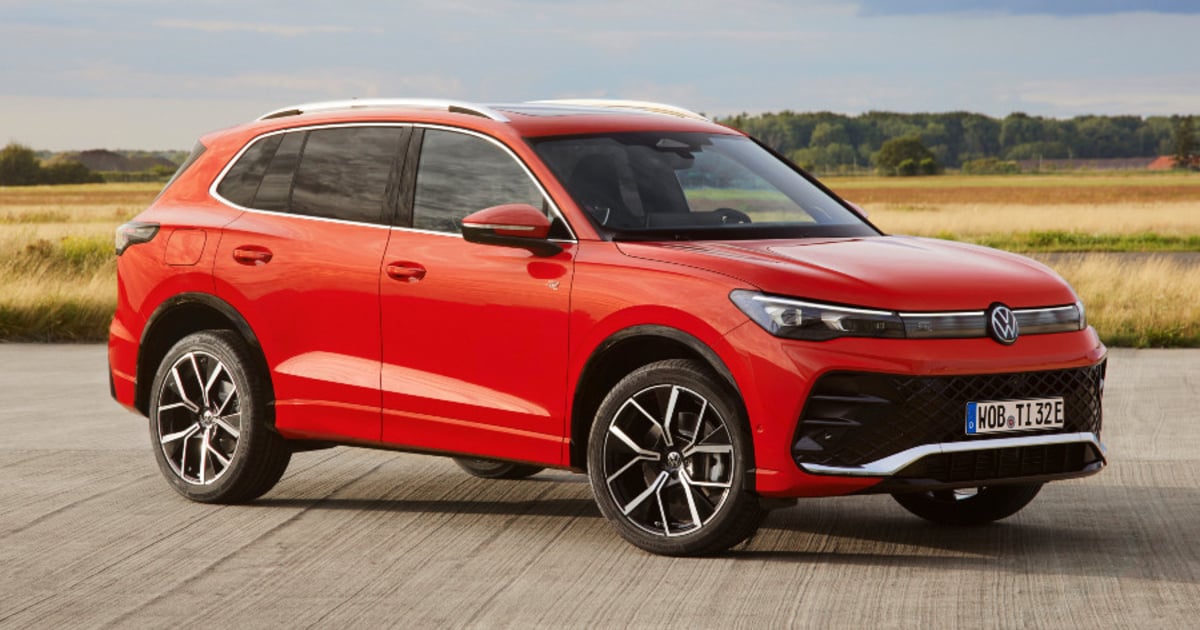
Volkswagen’s third-generation Tiguan has undergone a sleek makeover that the automaker claims reduces the compact crossover’s drag coefficient to 0.28Cd from 0.33.
New styling accentuates the lower part of the light truck’s grille, which extends to the edges where air curtains help reduce drag by flowing air more efficiently around the front wheels.
VW has included light strips across the front and rear of the vehicle, bringing the styling of the Tiguan in line with more recent designs. It can also be specified with high-definition matrix LED headlights.
VW has moved interior features including heating and ventilation controls on to the dashboard screen, which measures up to 15 inches. Like the VW Passat, the new Tiguan runs what the automaker calls its MIB4 (modular infotainment matrix 4th generation) digital architecture for cockpit and central screen displays.
The plug-in hybrid version of the new Tiguan will have an electric range of up to 100 km (62 miles), which was made possible by switching the crossover to the updated version VW Group’s MQB platform.
The Tiguan was VW’s top seller in the U.S. in 2022, with sales of 88,577, down 19 percent from 2021. In the first half, it was VW’s No. 2 seller behind the Atlas, with sales of 38,785, flat with the first half of 2022.
The third-generation Tiguan adopts the new Evo version of VW’s MQB platform, which will be shared with the forthcoming VW Passat midsize wagon, Skoda Superb midsize car and Skoda Kodiaq midsize crossover.
The platform incorporates a bigger 19.7-kilowatt-hour battery on the 1.5-liter plug-in hybrid version, as well as adaptive chassis control with adjustable shock absorbers, VW said.
The broad use of the platform allowed VW to “democratize” high-tech advances because of economies of scale, Kai Grünitz, head of development at the VW brand, said in a statement.
The latest Tiguan will only be available in one length, with the bigger Allspace midsize version replaced by the new Tayron crossover due in 2025, VW said in an email. The Tiguan Allspace will remain on sale until then.
It is unclear which model VW will use for the third-generation Tiguan to be sold in the U.S. The next-generation Tiguan is set to launch in the U.S. in 2025 and will include a new high performance version.
In Europe, the Tiguan will be available with plug-in hybrid, diesel, gasoline and mild-hybrid gasoline powertrains. No details were given, but powertrains will likely match those of the new Passat, which will offer a 1.5-liter mild-hybrid, a 2.0-liter turbo gasoline with two power outputs and a 2.0-liter diesel with three power outputs, depending on market.
The eHybrid is expected to be offered with either 201 hp or 268 hp.
All models come with a dual-clutch transmission, which has allowed VW to move the gear selector onto the steering wheel column.
On the central console where the gear lever used to be is a dial with a built-in screen that can be programmed to control the driving profile, radio volume or background lighting colors.
At 652 liters, the new Tiguan’s trunk is 37 liters larger than in the model it replaces.
Otherwise, the height, width and wheelbase of the car “remain practically identical to the predecessor,” VW said without giving figures.
Equipment available on the car includes massage seats, dynamic road sign assist, Travel Assist semi-autonomous driving, lane keeping assist, and lane change assist.
The new Tiguan will arrive at dealerships in Europe in the first quarter of 2024, VW said.
No prices have been given, although they are expected to be higher than the current model’s €32,930 base price.
VW said it has sold more than 7.6 million Tiguans since its debut in 2007, making it one of its most successful models ever.